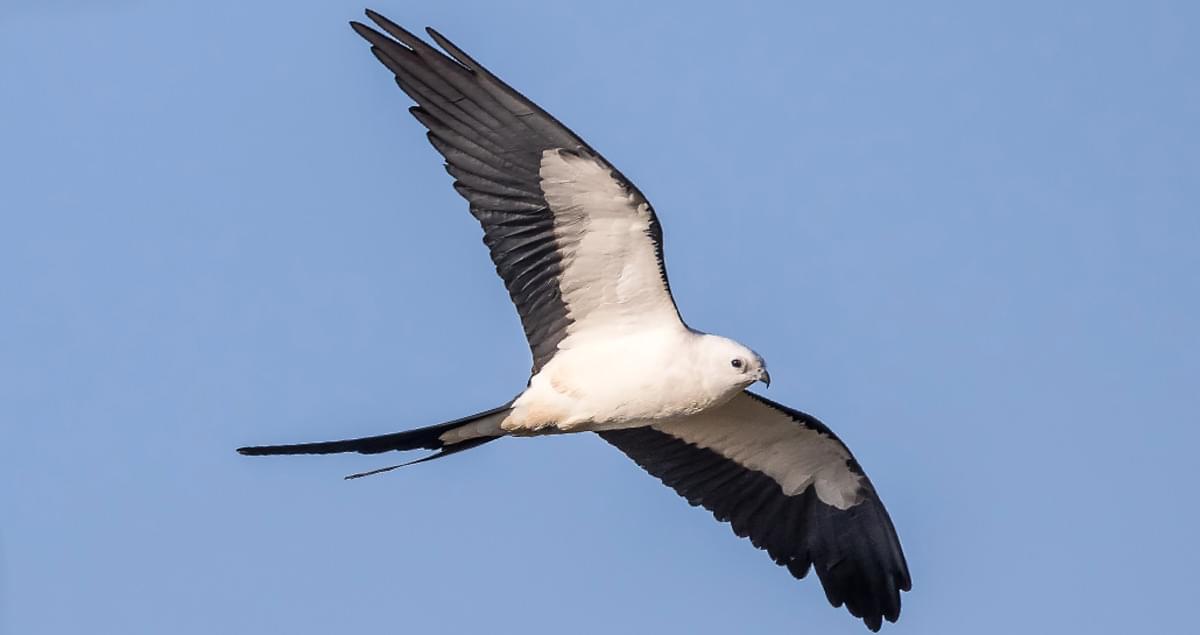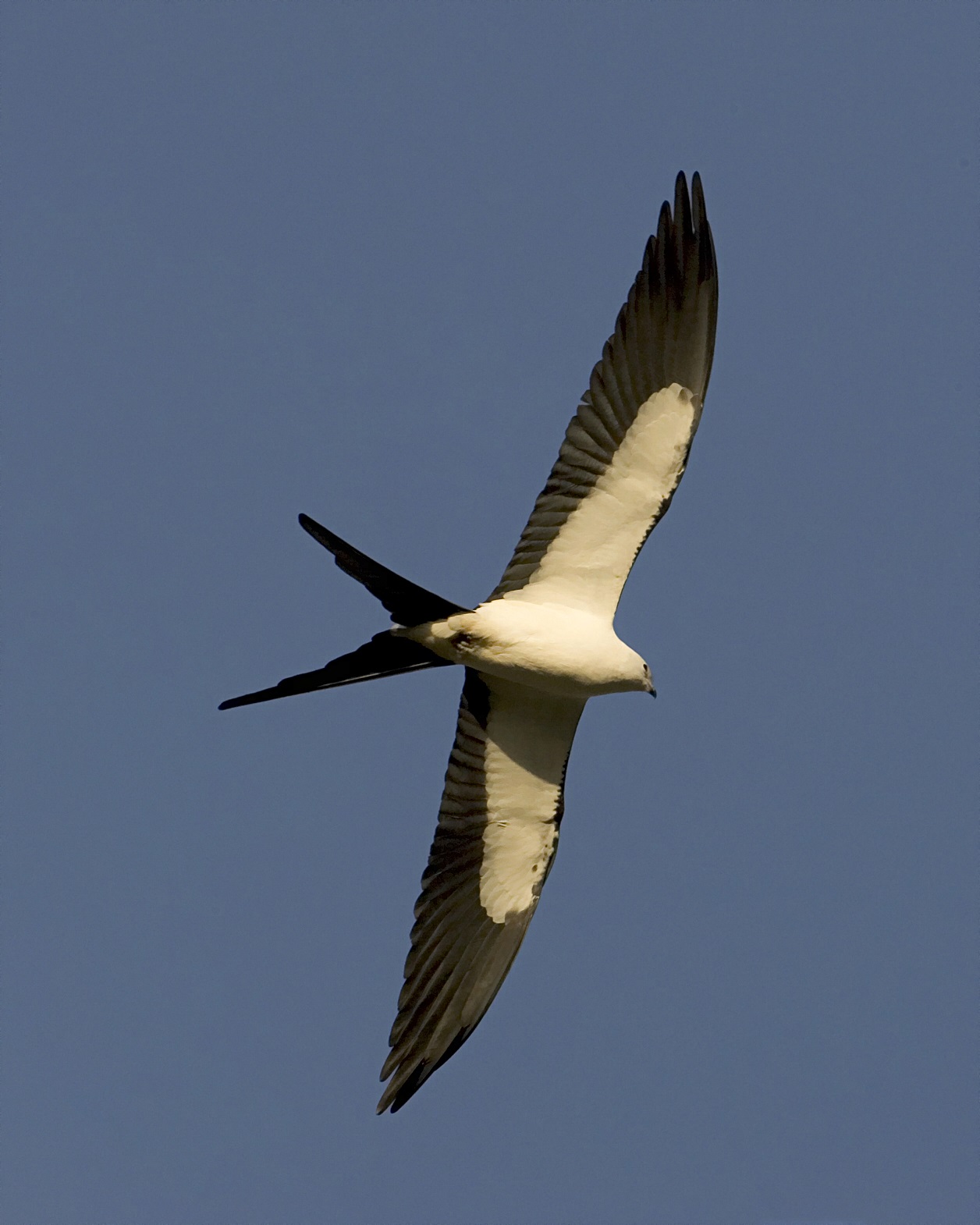I was having dinner with my family on a cool March evening when one said “I have not seen any Swallow-tailed Kites yet. We usually see them this time of year”. To which I replied, “I saw one today!” – and I had. It was March 23, a very windy afternoon, and I saw it briefly zip over our backyard. The Swallow-tailed Kites were back.
Back in the sense they were back from their long migration from South America. The Swallow-tailed Kite resides there and ventures north to Central and North America during the summer for the breeding season.

Photo: Cornell University.
It is a magnificent bird, described as “one of the most awesome birds in the U.S.”. Their long slender bodies are sharp in contrast with a brilliant white head and a deep black body. They have long pointed wings which they use to soar with grace, rarely flapping their wings, and their key feature of the scissor-looking forked tail. They are a relatively large bird somewhere between the size of a crow and a large goose. Swallow-tailed kites are often seen soaring just above the treetops searching for food but can also be seen at higher elevations gliding along with the wind. It is a bird that many get excited about when they see it.
Arriving in the United States in late February and March, they seek out opportunities for nesting habitat. Their preference are tall trees, usually 60 feet or taller, and most often select pine trees, though have been known to nest in cypress and other large trees. They usually select trees close to water or open fields. These locations provide an abundance of their favorite prey – insects. They can be seen zooming close to the trees to grab unwary prey and will, at times, take larger creatures like treefrogs, lizards, and small snakes. Their beaks are small however, and so prey selection is limited.
Both the males and females participate in nest building. Swallow-tailed kites are monogamous and mate pairing often occurs during the migration. They usually build a new nest each season but often is the same location. Males are territorial of these nest locations and defend them with local vocalizations. Despite this, many swallow-tailed kite nests can be found near each other.
Once the young hatch, the female remains with them while the male forages for food. He typically brings it back to the nest in his talons, perches and transfers the food to his beak, and the provides it to the female who in turn feeds the chicks. After fledging, around August or September, it is time to head back to South America and they leave our area until next spring.

Photo: Rodney Cammauf. National Park Photo.
Swallow-tailed kites were once common all along the Mississippi River drainage as far north as Minnesota. However, the numbers declined significantly, primarily due to humans shooting them, and today they are only found in the lower coastal regions of the southeastern U.S. Today they can be found, but are uncommon, in coastal Louisiana, Mississippi, Alabama, Georgia, and South Caroline. In Florida they are considered uncommon in the panhandle but common in the peninsula part of the state. Their numbers seem to be increasing but the loss of tall nesting trees is a major issue today. The clearing of these tall trees due to agriculture and urban development have kept them from reestablishing their original range. But for now – the swallow-tailed kites are back.
For more information on this amazing bird read the following.
Swallow-tailed Kite. All About Birds. Cornell Lab. Cornell University.
https://www.allaboutbirds.org/guide/Swallow-tailed_Kite/id.
Swallow-tailed Kite. Bird Guide – Hawks and Eagles. Audubon Society. https://www.audubon.org/field-guide/bird/swallow-tailed-kite.
 6
6
